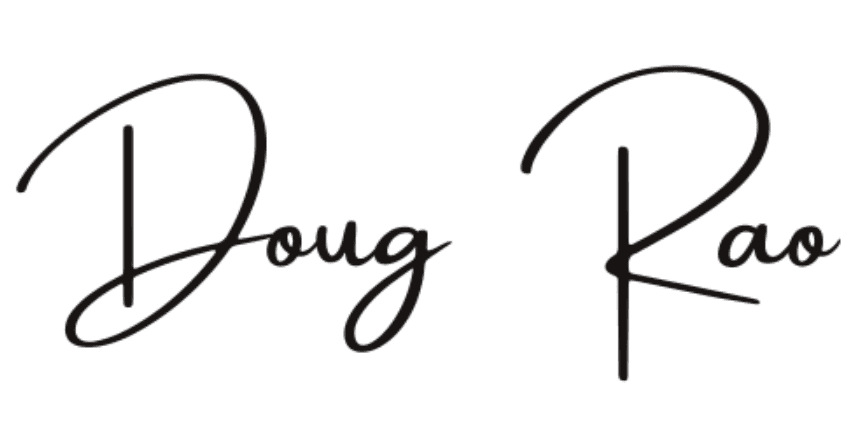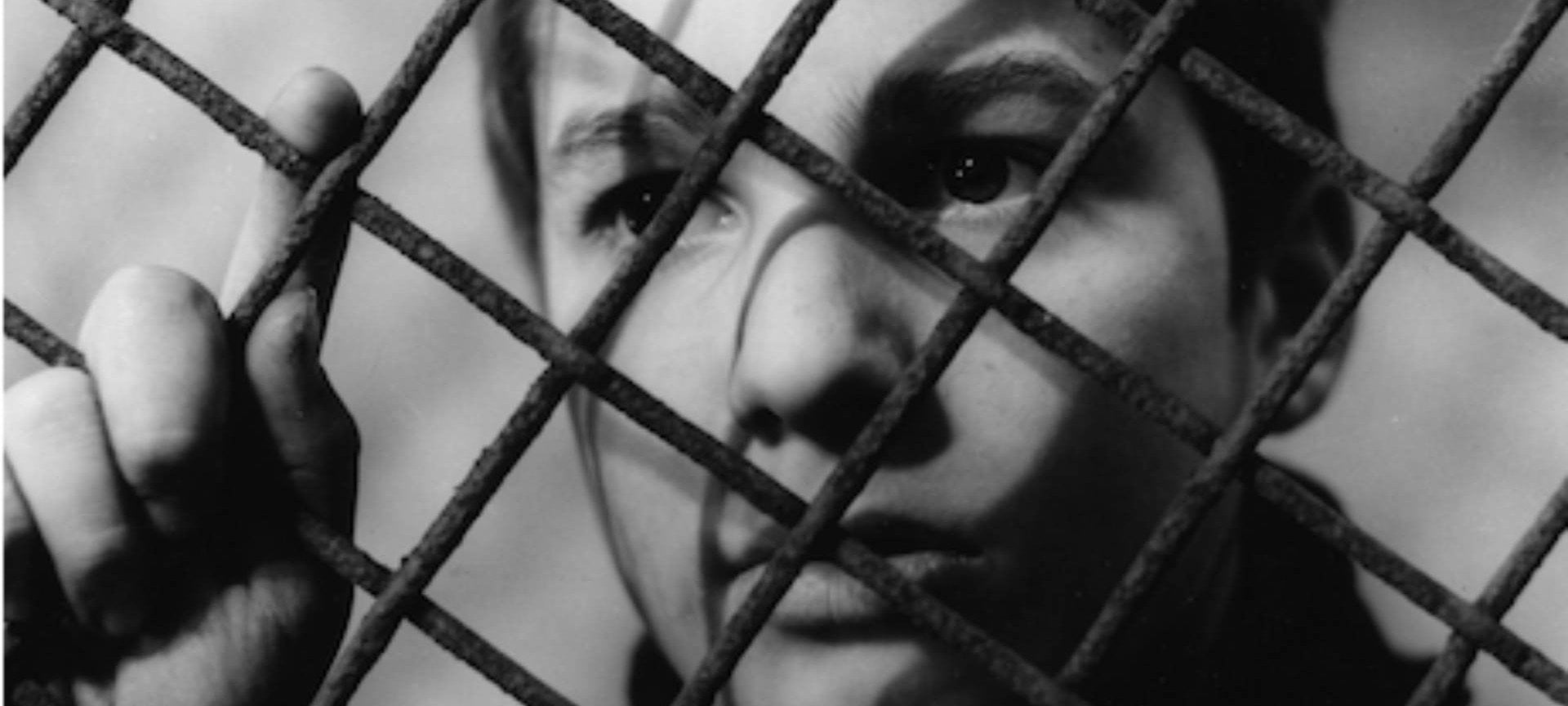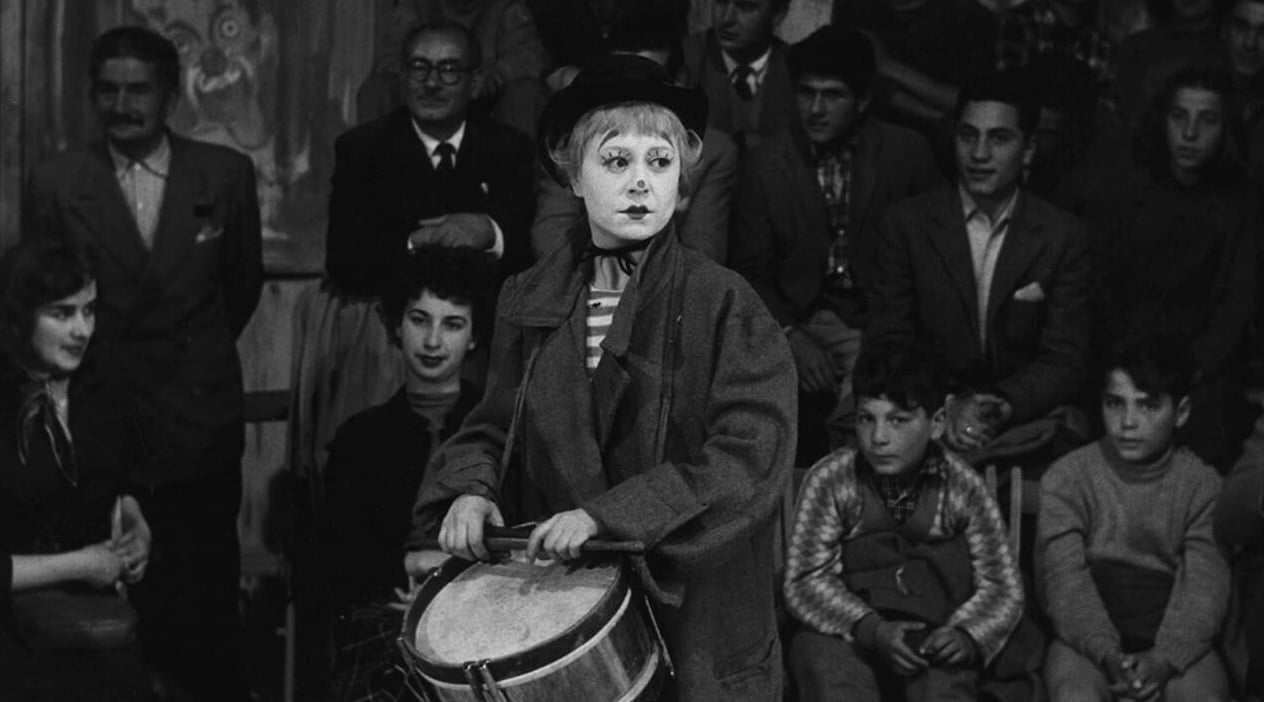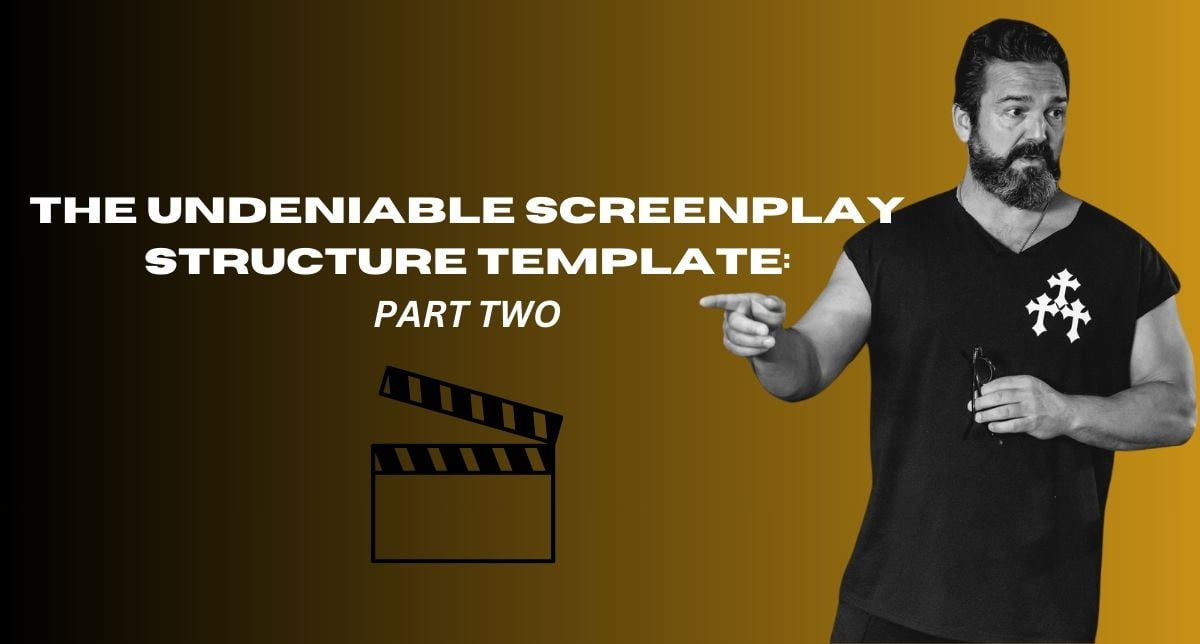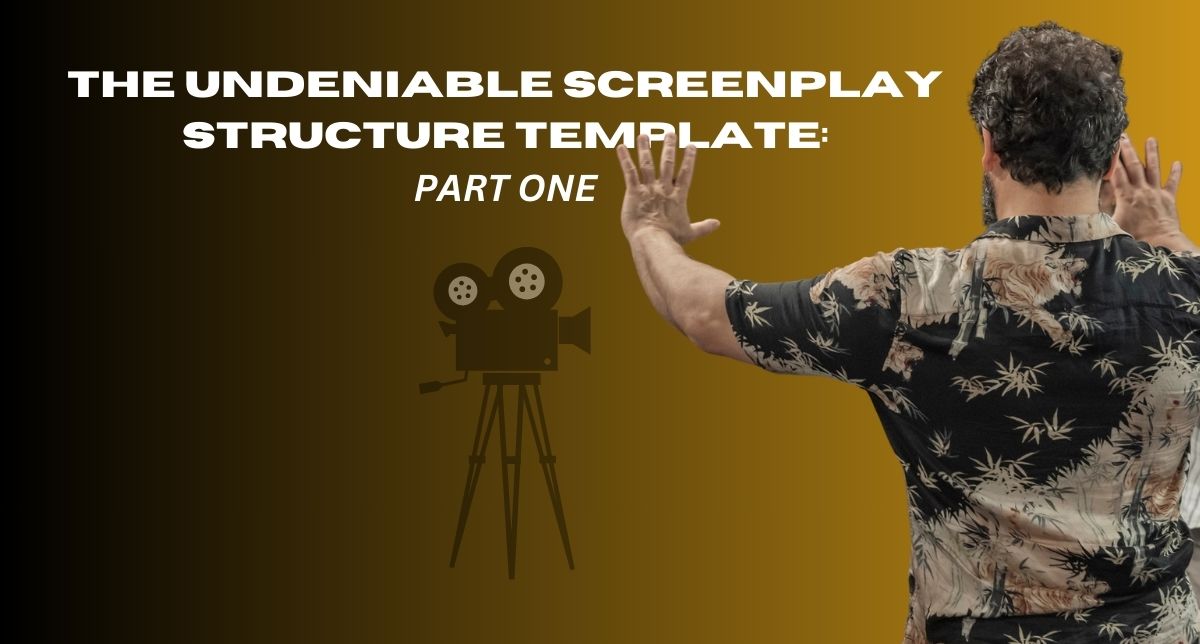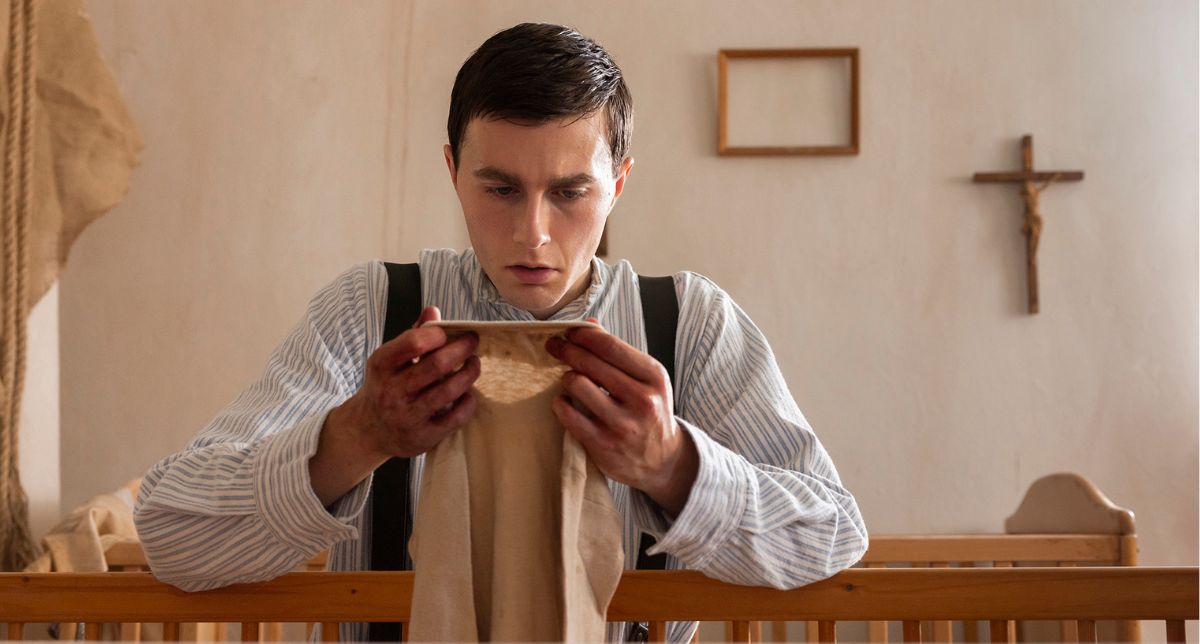Dear Storyteller,
Every writer has stared down at that mighty wall of a hundred blank pages that are crying out to be filled with a compelling fable. Every writer knows the struggle; attempting to wrestle chaos into a coherent story.
For decades, we’ve been fed the same formulas from the likes of Robert McKee, Syd Field, and Christopher Vogler. Their work has undeniably shaped us as screenwriters and storytellers, and many of us have used their structures as a crutch — I know I have! There is gold in all the teachers, from Aristotle to Joseph Campbell to Richard Krevolin, and I’ve mined them all. I’ve picked up gems from all of them and they’ve all helped shape my idea of what cinematic stories should be.
But somewhere along the way, I began to feel that I needed more specific guidance in shaping my stories.
So I decided to create my own paradigm.
My UNDENIABLE SCREENPLAY STRUCTURE TEMPLATE isn’t just some cobbled together theory on screenwriting structure. It’s a tried-and-tested formula that blows up some of the conventions whilst clinging to others in an effort to create a story that’s dynamic, flexible, and truly resonant.
It’s worked for me, and that’s why I present it to the world fearlessly.
It’s the structure I used to pen GUNN, the screenplay that snagged me Gold Prize at the prestigious and wonderful 2023 PAGE Screenwriting Awards, and DIRTY BOY, which made it all the way to a Gala Screening at 2024 Cannes after securing full funding within just a year.
This structure template isn’t just theory—it’s a battle-tested blueprint.
The Undeniable Four-Act Structure (Or is it Five?)
While traditional structures often stick rigidly to three acts (Syd Field) or dabble with the Hero’s Journey across twelve steps (Vogler), with the UNDENIABLE SCREENPLAY STRUCTURE TEMPLATE, I’ve hand-picked the best elements from years of study and trial and error and I’ve found a structure that works for me. I found that by embracing a 4-to-5-act structure, I could add more turning points, dig deeper into character and add more layers, emotional beats and plot twists.
Using this story structure, I’ve won a top prize in a screenplay competition and attracted an A-list actor and A-list director to GUNN and I’ve fully financed (in a short space of time) a feature, DIRTY BOY that was invited to play in a Gala Screening at Cannes.
It’s working for me — maybe it could for you too…?
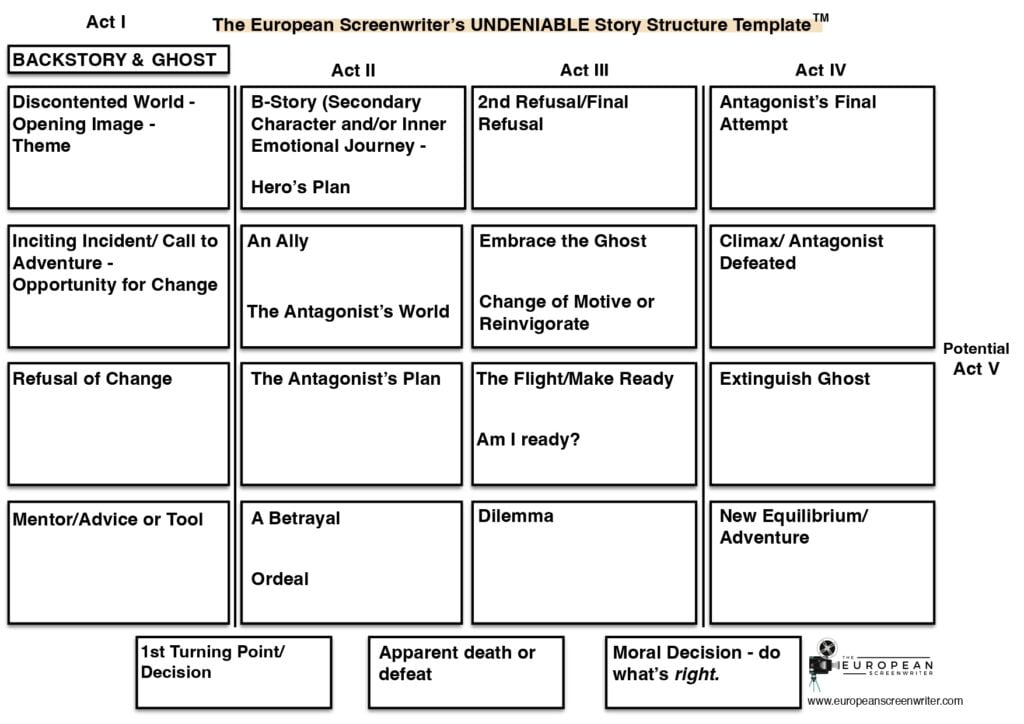
Act One: Setting the Stage (or Lighting the Fuse?)
Prelude – The Ghost
Before anything kicks off, we explore the protagonist’s “Ghost”— a shadow from the past, a lingering regret, or an unfulfilled promise. It’s the haunting force that sets the emotional tone of your story, acting as a precursor to the protagonist’s journey. It’s the worst thing that ever happened to your protagonist, or the worse thing he ever did — powering the the regret, the fear, the pain that haunts them into the present. And it establishes a fear — the worst thing that ever happened to them could happen again.
In GUNN, it’s his wife and daughter drowning at sea and his inability to save them. This is the worst thing that ever happened to him. It Gunn’s desperate guilt and his need to make up for his shortcoming when (the worst thing that could ever happen) his remaining daughter is kidnapped.
In CASABLANCA, we don’t see it early on, but it’s the loss of his true love and being stood up at the train in Paris. Rick is hardened and selfish because if this ghost — ’I stick my neck out for nobody’.
The Discontented World
Now, we’re in the protagonist’s life, but it’s a life out of balance. Here’s where the seeds of dissatisfaction are sown. My Discontented World title is a nod to Vogler’s ‘Ordinary World’, but this world has more bite — it’s not just where the hero starts, it’s what’s already gnawing at them from the shadows.
The world is either pushing the protagonist down or failing to satisfy some deep inner need. Before we get to the Inciting Incident, we need to feel the protagonist’s imbalance. We need to see what’s broken before we can fix it.
The Inciting Incident/Opportunity for Change
Here comes the spark; the moment that shoves our protagonist out of their discontented life. Syd Field nailed it with the importance of this beat, but what he leaves out is the choice; this isn’t just an event, it’s an opportunity. It’s not enough to throw a random event at your character; it needs to be something they can seize or reject — see Refusal of Change.
In DIRTY BOY, the inciting incident is when our protagonist, Isaac witnesses a ritualistic murder and sets out on a path to discover what happened. But not before he’s presented with the opportunity to run.
The Refusal of Change
A hero who leaps at the call of adventure without a moment of doubt could potentially be a dull hero.
The Refusal is the moment when your protagonist clings to the familiar. This is Vogler territory, but we take it to the next level by tying it back directly to that shadowy ghost from the prelude. It’s the moment where the Ghost tightens its grip. Allow space for your protagonist to wrestle with his ghost.
Of course, the refusal doesn’t have to come from the protagonist — it can come as a warning from someone close to them — but if it comes from somewhere within the protagonist’s psyche, it makes for stronger storytelling, in my humble opinion.
If we think of this stage less as The Refusal of the Call and more The Refusal to Change, we have a deeper examination of the character.
In DIRTY BOY, we think Isaac is going to make the ultimate refusal of change and take his own life by taking pills (as he always has done, but more so) when — The Mentor steps in.
The Mentor/Advice/Tool
Be it a wise old sage, a magical sword or even just a fleeting piece of advice, this is where your protagonist gains the tools they need, both physically and mentally, to embark on their journey. This is the hero’s first real step away from the Ghost and towards something new.
In DIRTY BOY, Isaac is about to take the pills when he looks up at the statue of the ultimate mentor figure, Jesus Christ, remembers a line of scripture and then makes a bold new decision.
The First Turning Point/Decision
The real adventure begins. This is the moment we break into Act Two, where the protagonist makes a decision that can’t be undone. He’s accepted the call, got his tools, and is ready to face whatever comes next. But this isn’t just about physical action. The protagonist is also crossing an emotional threshold, changing enough to fully step out of their discontented world.
In DIRTY BOY, Isaac fakes a drug overdose in order to escape to a hospital where he’ll have a chance to explore the unfolding mystery. It’s a dangerous decision, but one which open him up into a frightening new world.
Act Two: The Messy Middle (Where the Real Magic Happens)
Storytellers often struggle with this huge middle section and it’s where 90% of stories fail and become boring. I’ve found that by splitting the traditional Act Two into Acts Two and Three and creating very specific stages within them, that I can forge a compelling middle section, full of twists and turns and put my protagonist through the ‘emotional wringer’.
B-Story – The Secondary Character and/or Inner Emotional Journey
Your B-story isn’t just a subplot; it’s the emotional core that gives your A-story depth and resonance. Maybe it’s a love interest, a friendship, or an internal struggle. Vogler talks about “Tests, Allies, Enemies”— this is where those elements blend into the hero’s emotional world, giving us a deeper connection to their journey.
In DIRTY BOY, Isaac meets a captive refugee that he feels an affinity towards. Her vulnerability spurs Isaac on to save her and gives his quest a new energy.
The Hero’s Plan
With Act Two now in full swing, your protagonist isn’t floundering—they’ve got a plan. Yes, it might be a flawed plan, and it’ll probably go wrong, but it’s their attempt to take control.
Unlike the somewhat vague ‘Rising Action’ from McKee, this is a focused, intentional effort by the protagonist to steer their fate.
An Ally
No hero goes it alone. Here’s where we introduce an ally—not just a sidekick, but someone who challenges and complements the protagonist. The ally’s role is to highlight the protagonist’s strengths and weaknesses, making them crucial to both the plot and the emotional journey.
In DIRTY BOY, Isaac’s ally is Hope, vulnerable but brave cult member. She gives Isaac the pieces off information that he needs and also highlights and inspires his bravery.
The Antagonist’s World (Crossing Threshold)
In this structure, the protagonist doesn’t just face obstacles — they must step directly into the antagonist’s world. This is where they ‘cross the threshold’, often physically, but always metaphorically, entering a space controlled by their enemy.
It’s like descending into the underworld—think of this as a blend of Vogler’s ‘Approach to the Inmost Cave’ combined with McKee’s ‘Second Act Complication.’
The Antagonist’s Plan
Here’s the big addition, and something I think it is imperative to add. Because I like to write morally ambiguous characters, we need to seeing the villain being villainous!
The antagonist can’t just be some vague force. It’s here that we begin to understand his terrible motivations and malevolent methods.
In the UNDENIABLE SCREENPLAY STRUCTURE TEMPLATE, the villain is a real character with their own goals, plans, and struggles. This is where we meet the antagonist, understand their motives, and how they directly oppose the protagonist.
A Betrayal
This is where the story takes a sharp left turn. Someone close to the protagonist isn’t who they seem, or perhaps the protagonist is betrayed by their own assumptions or inner demons.
This isn’t always in the classic templates—Field, McKee, and Vogler gloss over this crucial element, but a betrayal is often the catalyst that shoves the protagonist into the next stage of their journey.
In DIRTY BOY, our lead character Isaac has multiple personality disorder. His alter ego, Frankie the Dragon, is a demonic presence that often leads Isaac astray. In this part of the story, he leads Isaac away from his objective and puts him in a position where he is ultimately captured.
The Ordeal
Here, our hero faces their first major trial. This is McKee’s “Crisis” moment but with more emotional depth. It’s not just a test of strength—it’s a test of character, often forcing the hero to confront their ghost or their deepest fears.
If the ghost section does its job — the audience will be aware of the thing that the protagonist fears the most (the worst thing that could ever happen) — and in the the ordeal, we cruel storytellers will put our protagonist through that exact thing.
In GUNN, his ghost is losing his wife and daughter and not being able to save them. So, at this point, I cruelly had the antagonists take Gunn’s remaining daughter from under his nose!
Mid Turning Point – The Apparent Death or Defeat
After this terrible ordeal happens at the heart of our story, the protagonist is seemingly defeated, maybe on the verge of death, or they’ve lost something vital to the quest.
Whatever it is, the audience should feel the hopelessness and sense of loss that the protagonist feels — that surely this is the end of the adventure. It’s not just a ‘Pinch Point’ as McKee would call it — This is the turning point where everything changes — a pivotal moment that forces a recalibration of everything the protagonist (and the audience) thought they knew.
And just when you think your hero has hit rock bottom, that’s when you hit them harder. The Middle Turning Point—the apparent death or defeat—is the moment where all seems lost, where the audience grips their seats, and your protagonist is hanging by a thread. In The Empire Strikes Back, it’s Luke losing his hand and discovering that his enemy is his father.
This isn’t just a plot twist; it’s the moment that redefines the entire journey.
But don’t worry, we’re not leaving our hero in the dust for long.
There’s still a battle to be fought, ghosts to confront, and a world to change.
In the next instalment, we’ll dive into the meat of the second half of the story — the descent into the abyss, the final refusals, and the epic showdown that defines the climax. You’ve seen how we’ve laid the groundwork, now let’s see how we blow it all up.
I’m thrilled to be sharing my UNDENIABLE SCREENPLAY STRUCTURE TEMPLATE with fellow storytellers because I believe in the power of cinematic stories to change lives. I think story is sacred and needs to be nurtured and honed. This structure is my proven pathway that has transformed my ideas into award-winning scripts, and now, I want to share it with to you.
I hope it ignite your creativity, empower your voice, and help you craft stories that resonate deeply and leave a lasting impact. Together, we can break free from the ordinary and create something truly extraordinary.
The Second Half of this structure to follow…
